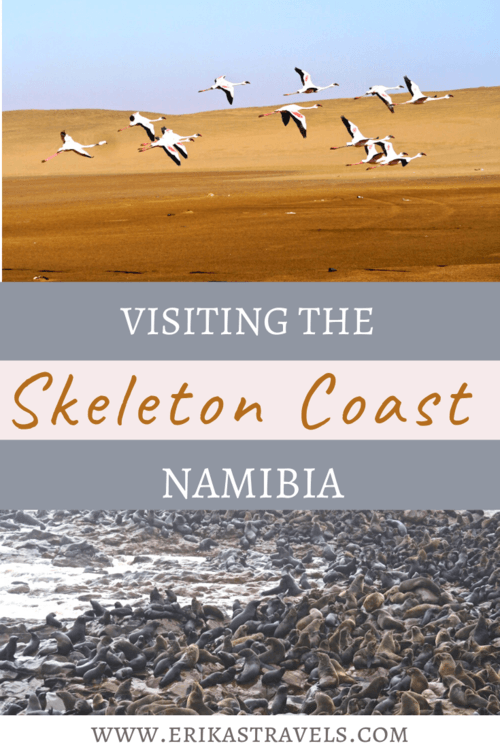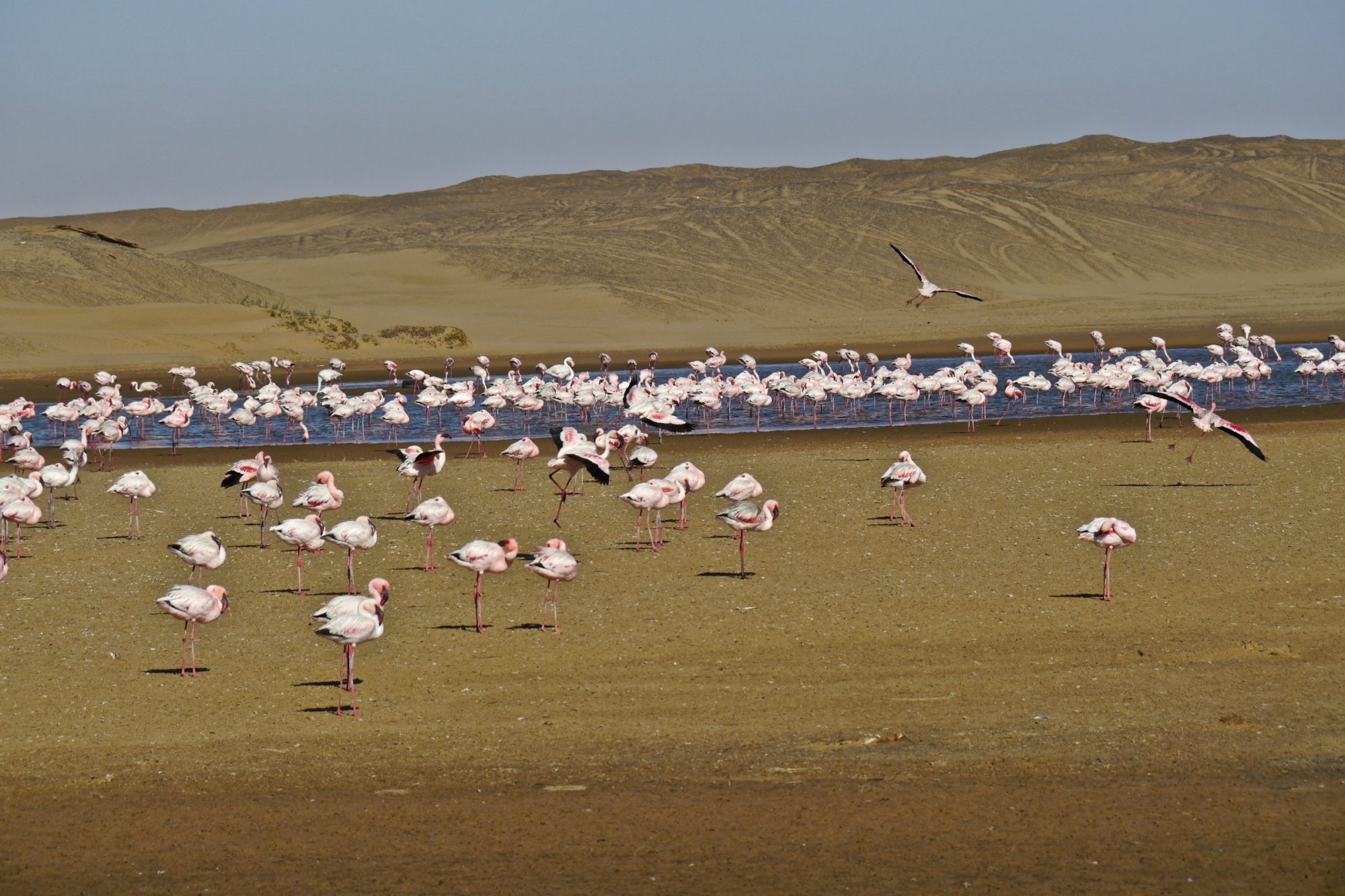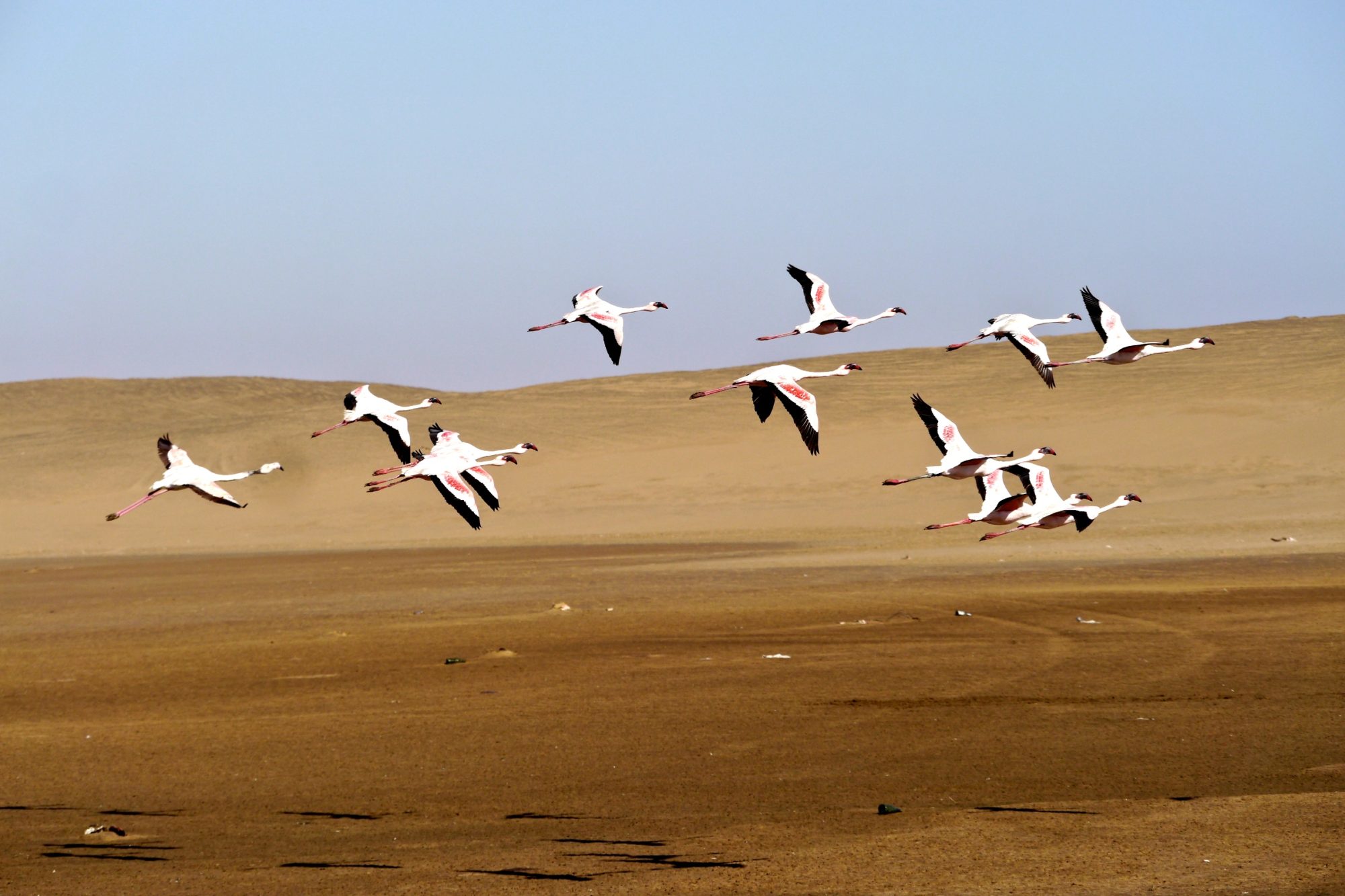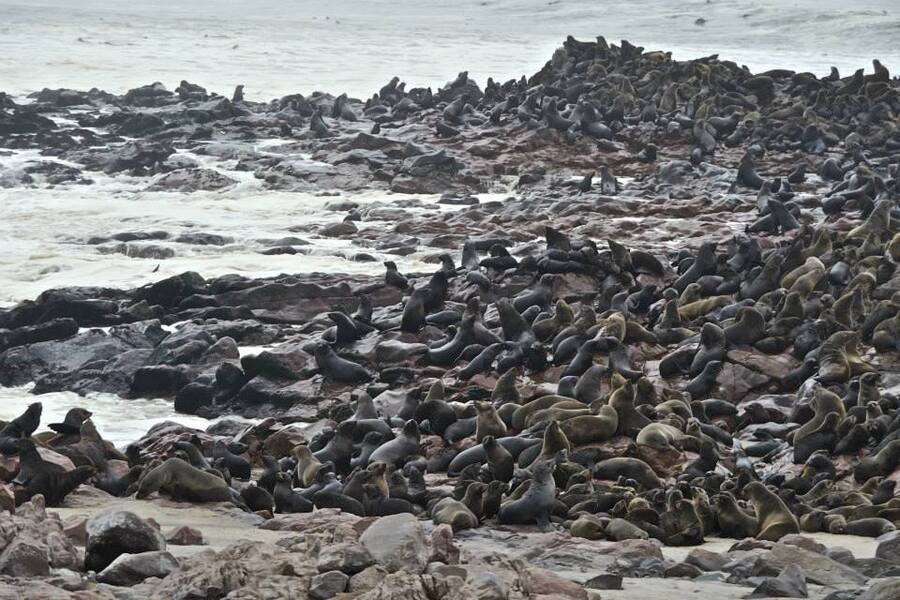
The Skeleton Coast in Namibia: What to Expect
Some refer to Namibia as ‘The Land God Created in Anger’.
And after a year of traveling extensively around the country, I find it easy to see why.
Namibia is a place where desolation manifests in exquisite beauty. It is a wild frontier, with unforgiving landscapes that seem virtually incompatible with life. The landscapes of Namibia are bleak, harsh, and foreboding.
Nowhere does this ring more true than along the otherworldly stretch of shoreline known as the Skeleton Coast.
THE SKELETON COAST IN NAMIBIA
Like a massive graveyard, the Skeleton Coast gets its forbidding name from the animal carcasses and shipwrecks that have washed up on its shores.
The Skeleton Coast’s topography consists of gravel plains, lichen fields and dunes that roll out toward endless horizons. The area encompasses two national parks and over 500 miles of coastline.
The Dorob National Park begins south of Walvis Bay and ends at the mouth of the Ugab River. The Skeleton Coast National Park picks up on the north side of the Ugab River and extends across the wild and remote Kunene Region near Angola.
Most tourists (including us) stick to the area within Dorob National Park.
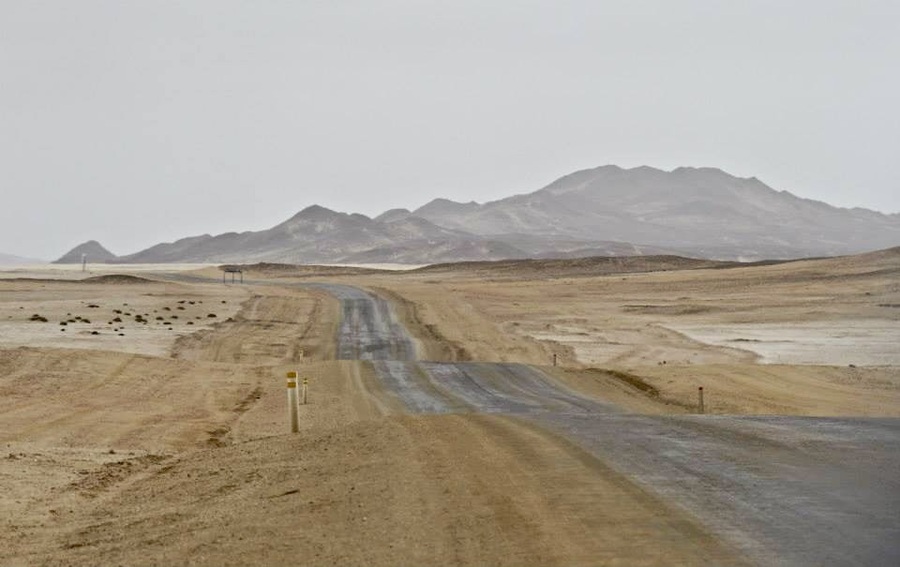
While driving along the Skeleton Coast National Park, it is easy to see how this otherworldly and barren landscape has been both revered and feared by intrepid travelers and explorers throughout history.
Portuguese explorers once called the Skeleton Coast the “Gates of Hell.” Get caught in the area’s waters, they soon learned, and your fate was all but sealed.
PLACES TO VISIT ALONG THE SKELETON COAST
Namibia’s Skeleton Coast contains few must-see destinations per se. Driving along the route is more about the experience as a whole. Photos of the landscape do not do justice to the area’s vast and endless nothingness.
That being said, there are a few noteworthy places to see along the lonely stretch of road. I’ve listed them below, from south to north.
Due to time restraints and vehicle limitations (we foolishly rented a 2WD car for our Namibia road trip), our Skeleton Coast itinerary did not allow us to go as far north as Mowe Bay.
-
WALVIS BAY LAGOON
The Walvis Bay Lagoon sits at the southern end of Dorob National Park, between the raging Atlantic Ocean and the golden dunes of the Namib Desert. The lagoon is among the most important coastal wetlands in southern Africa. Over 150,000 migratory birds spend their summer months in Walvis Bay.
The Walvis Bay Lagoon contains about 150 recorded bird species, though flamingos are by far the most prominent.
The flamingo-speckled lagoon is one of the most remarkable places to visit along Namibia’s wild and scenic coastline.
-
SWAKOPMUND
Swakopmund is a pleasant city that lies sandwiched between Namibia’s coastal dunes and the Atlantic Ocean. It is a fairly westernized town, with colonial German architecture and tasty food offerings.
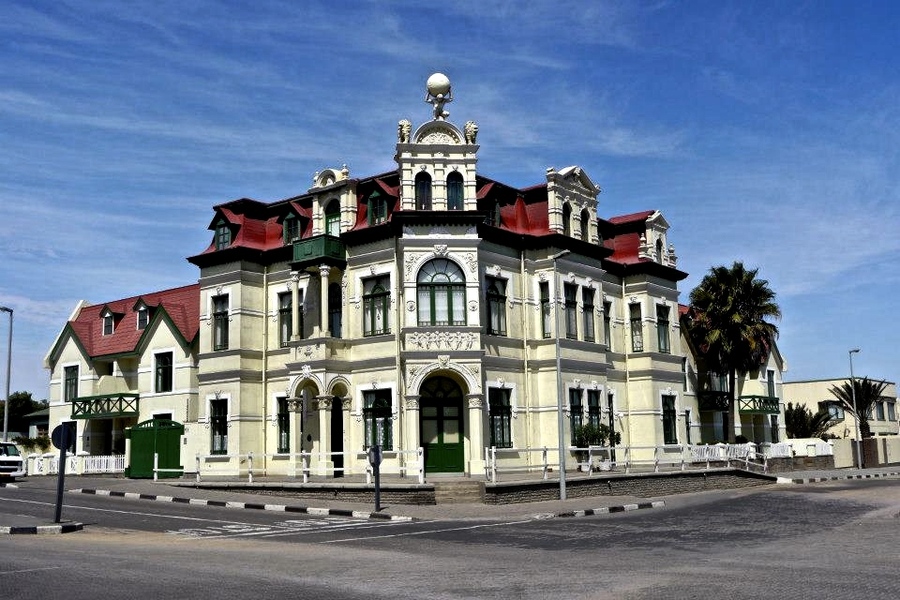
Swakopmund is one of Namibia’s largest cities and a popular tourist destination. Its position at the southern end of the Skeleton Coast makes it an ideal place to fuel up before your journey.
If you are looking to travel along Namibia’s wild coastline as a day trip, Swakopmund will likely be your beginning and end point.
-
WLOTZKASBAKEN
Wlotzkasbaken is a small collection of homes situated approximately halfway between Swakopmund and Henties Bay.
Founded as a holiday spot for anglers in the 1930s, Wlotzkasbaken developed into an unusual settlement. Its dispersed dwellings do not have fences or boundary walls. Instead, they rely on their distance from one another for privacy.
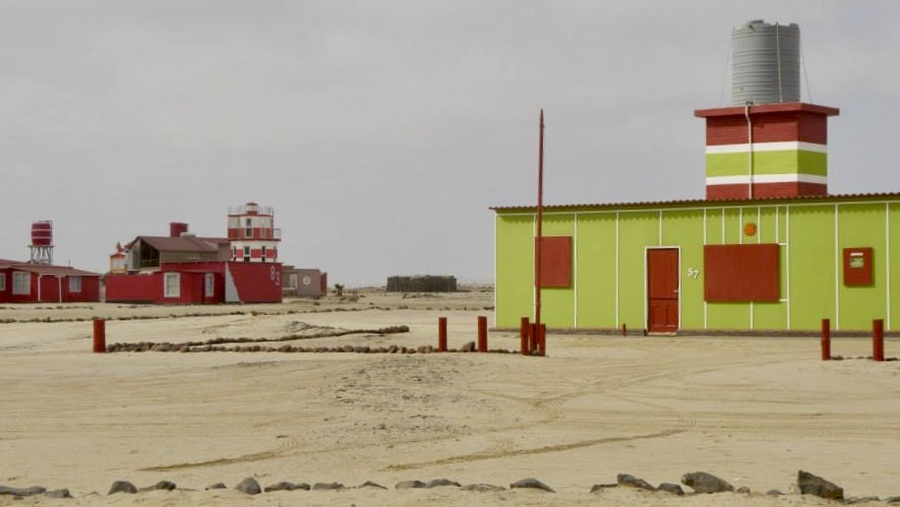
There isn’t really anything specific to do in Wlotzkasbaken, but it is an interesting place to get out of the car and stretch your legs.
With its stark yet colorful architecture, it is unlike any vacation spot I’ve ever seen.
Wlotzkasbaken’s colorful houses are particularly intriguing because of how much they contrast with their bleak and monochrome surroundings.
-
SKELETON COAST SHIPWRECKS
For much of the year, a dense fog blankets the Skeleton Coast. This fog—coupled with rough seas that are a result of cold ocean currents mixing with stifling desert air—is challenging to navigate.
As a result, the coastline has become a magnet for shipwrecks. Throughout history, more than a thousand vessels have washed up along Namibia’s coastline.
The Zeila Shipwreck is the most accessible ruined vessel along the Skeleton Coast. An Angolan fishing trawler that was being pulled to India for scrap, it ran aground in 2008. It lies wedged in the sand, tousled continuously by the rough waves of the Atlantic.
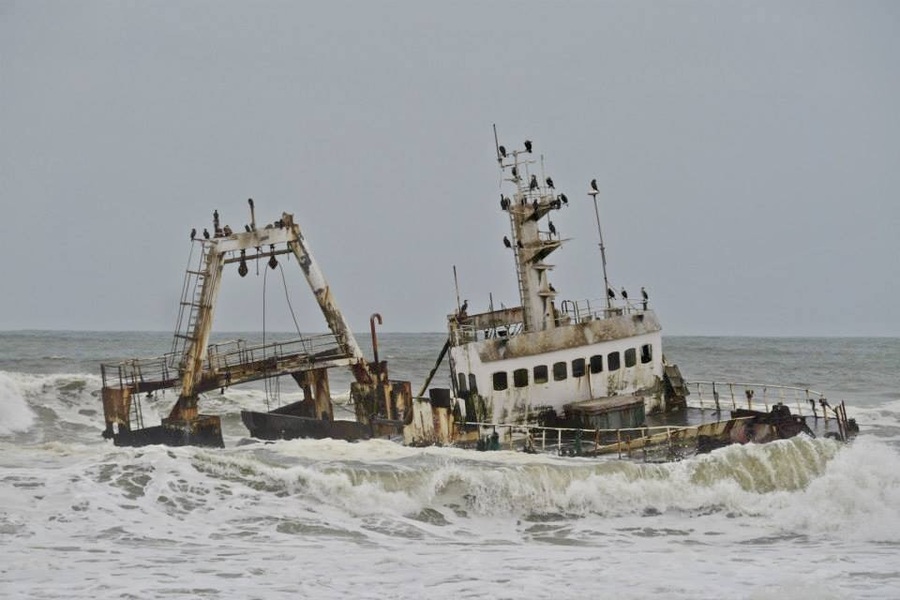
Other noteworthy shipwrecks along the Skeleton Coast include the Eduard Bohlen, the Benguela Eagle, the Dunedin Star and the Tong Taw.
Some of the shipwrecks are difficult to reach and require straying off the main road. GPS locations are notoriously inaccurate and location information is often contradictory.
I suggest you do adequate research beforehand if there’s a shipwreck that you’re intent on seeing.
-
CAPE CROSS SEAL COLONY
The Cape Cross Seal Colony is among the most remarkable places to visit along Namibia’s Skeleton Coast. Home to one of the largest Cape Fur colonies in the world, it is a testament to the resilient wildlife that thrives in this inhospitable part of Africa.
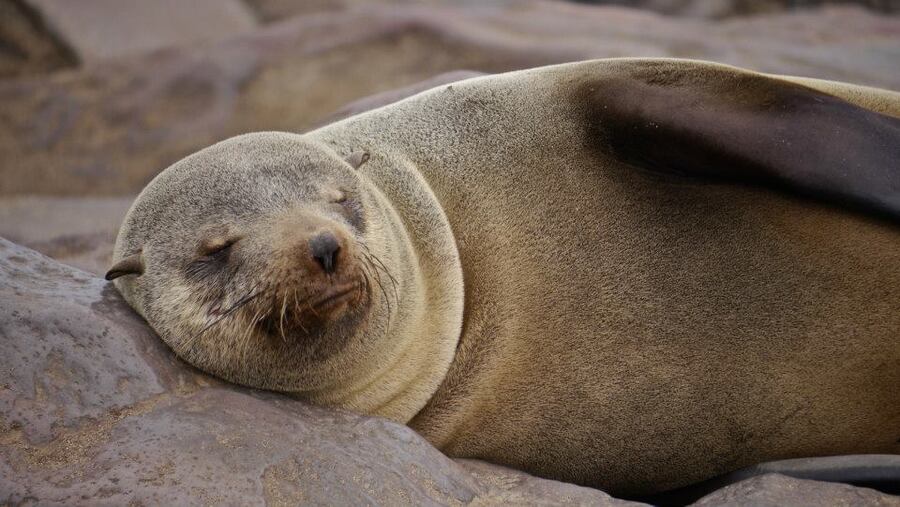
Cape Cross marks the point where Portuguese explorer Diego Cão landed on the Namibian coast and raised a giant cross in the 1600s.
Today, hundreds of thousands of Cape Fur Seals breed along its rocky shores.
The stench at Cape Cross is nauseating and the sound almost deafening, but the sight is so incredible that we lingered on the area’s boardwalks for a while.
-
SKELETON COAST NATIONAL PARK
The Skeleton Coast National Park occupies the northern section of Namibia’s famed coastline. It includes the road from the Ugab Gate to Mowe Bay, as well as the inaccessible portion of coastline near the Angola border.
Though there aren’t many things to see in this vast and desolate wasteland, there are a couple fishing “villages” along the way that are worth noting. Blink once, and you’ll miss them.
These settlements include Torra Bay, Terrace Bay, and Mowe Bay.
Terrace Bay Resort is has some basic facilities, including a lodge and a petrol station. It’s a desolate place, popular with fishermen.
Mowe Bay marks the end of the road. Beyond, you’ll find a swath of coastline that is completely inaccessible by private vehicle.
DRIVING ALONG NAMIBIA’S SKELETON COAST
The road along Namibia’s Skeleton Coast consists of salt, sand and gravel that changes colors in continuum. Known as the C34, it extends nearly 300 miles, from Walvis Bay to Mowe Bay.
While much of the unpaved road is in relatively good condition, I highly recommend a 4WD vehicle. If your budget allows, don’t make our mistake of renting a small sedan in Namibia. You’ll have so much more freedom and flexibility with a car that can handle rough terrain and poor roads.
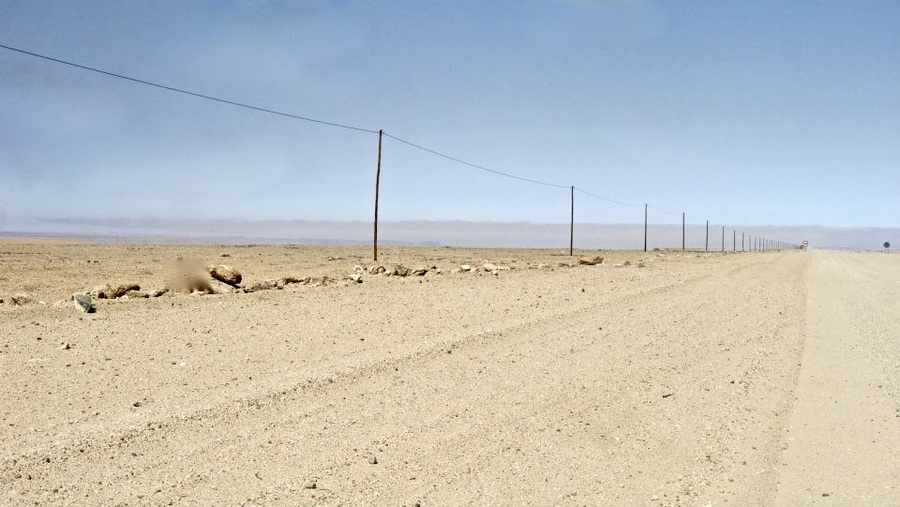
Petrol stations are rare sightings along the Skeleton Coast road, so it is best to fill up with fuel whenever possible. With that in mind, we filled our car’s gas tank in Henties Bay, and headed northward. Travelers who wish to spend a few days along Namibia’s C34, should consider carrying along extra fuel.
Petrol is available at Henties Bay, mile 108, and Terrace Bay (though it is best to carry your own fuel in case of emergencies).
SKELETON COAST PERMITS
While you’re free to explore the lower portion of the Skeleton Coast without a permit, you’ll need to obtain paperwork if you want to travel beyond the Ugab River into the Skeleton Coast National Park.
Permits are obtainable at the Ugab and Springbokwasser entrance gates.
WHERE TO STAY ALONG THE SKELETON COAST
Terrace Bay Resort offers basic accommodation and is run by the government-owned NWR (Namibia Wildlife Resorts). It is the only established year-round place to stay along the Skeleton Coast road. The vast majority of the people who stay at Terrace Bay are fishermen.
In Torra Bay, you’ll find a NWR campsite that is only open in December and January, during peak fishing season.
Located north of Mowe Bay, the Shipwreck Lodge is the most exclusive accommodation option along the Skeleton Coast. The shipwreck-shaped chalets offer unparalleled seclusion and views of the Atlantic Ocean. The lodge offers daily transfers from Mowe Bay for its guests.
If you’re planning on traveling along the Skeleton Coast as a day trip, you’ll find plenty of accommodation options in Swakopmund. We stayed at the Skeleton Beach Backpackers.
Other options include the Rustic Inn (budget), the Atlantic Garden Boutique Hotel (midrange) and the Strand Hotel (high end).
GETTING TO THE SKELETON COAST
There are two ways to enter the Skeleton Coast National Park: via the Ugab River Gate or via the Springbokwasser Gate.
Travelers from Windhoek, Sossusvlei or Swakopmund will likely access the park through the former, while those coming from Etosha or Kunene will likely utilize the latter.
We joined up with the Skeleton Coast road near Henties Bay, after a few days of exploring Damaraland‘s rust-colored landscapes. During our road trip, we never traveled north of the national park entrance gates.
As we neared the Skeleton Coast, Damaraland’s red rock outcrops softened into a monochrome moonscape of grays and browns.
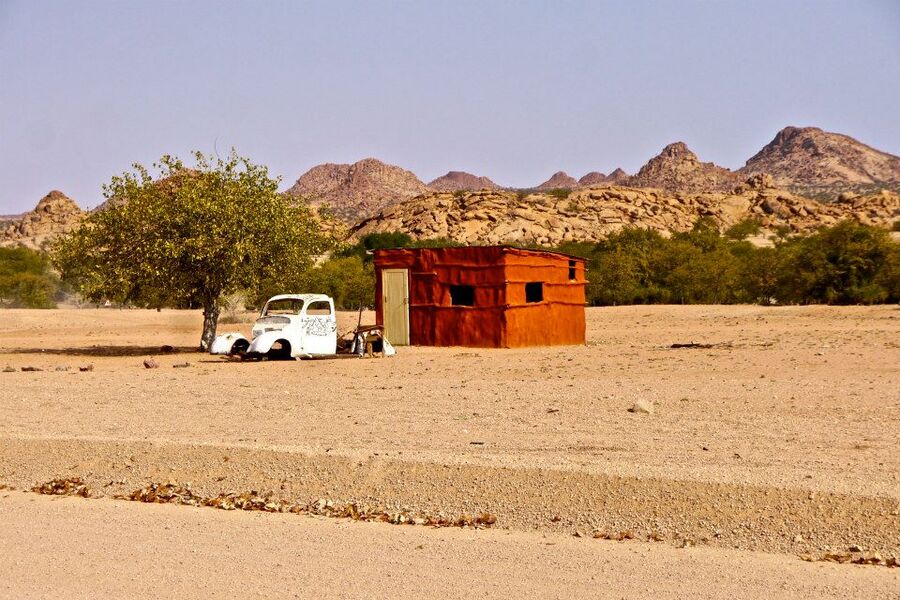
Moisture from the Atlantic layered our surroundings in an opalescent haze. On this long and lonely stretch of road, the pavement rolled outward uninterrupted, extending into mist and fog.
It was lunar and otherworldly. A place where “getting there” was all part of the fun.
****
Driving the Skeleton Coast road in Namibia made us feel as though we were venturing into nothingness, skimming the surface of the moon, and bracing to drop off the edge of the planet.
The landscape along Namibia’s coast is vast and forsaken: a place where the riverbeds have been thirst-quenched for centuries and the dunes have shifted restlessly for millennia.
Along this wild and dramatic road, there are no towns to break up the emptiness. No signs of life to relieve the feeling of loneliness and desolation.
But it is precisely this nothingness that makes this austere and desolate wasteland such an intriguing place to visit.
_____________________________
Did You Enjoy This Guide to the Skeleton Coast in Namibia? Pin It!
